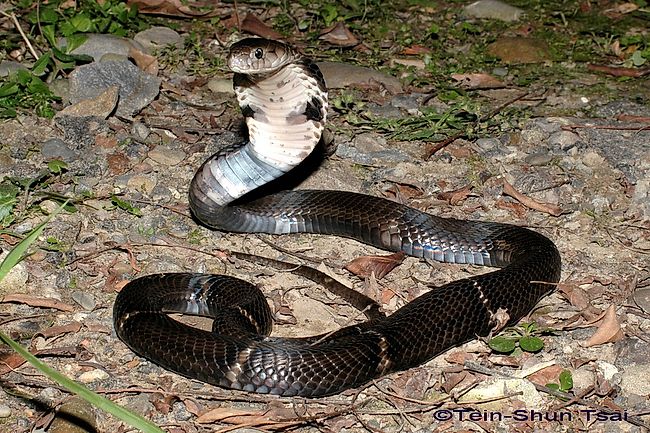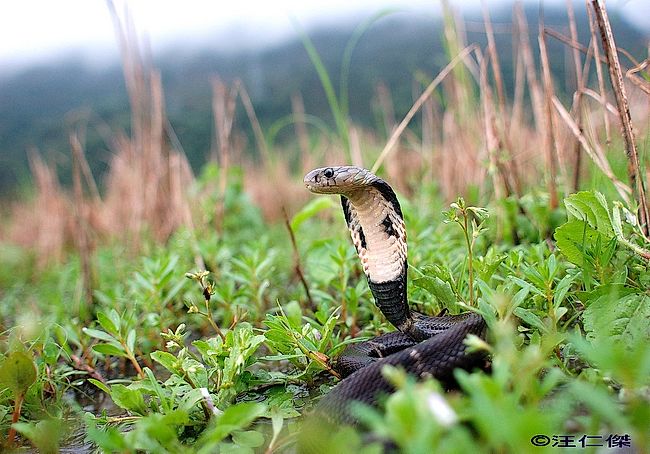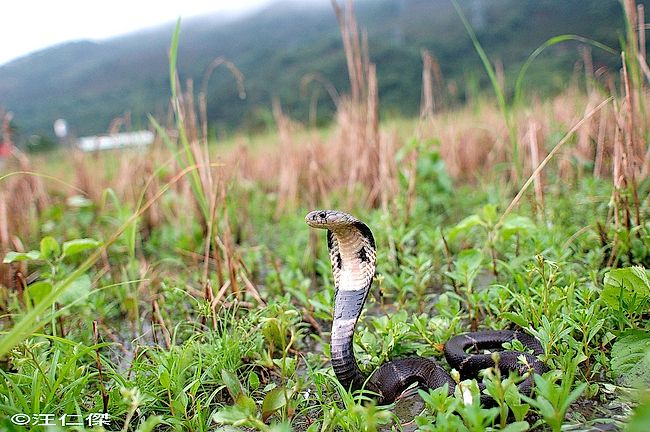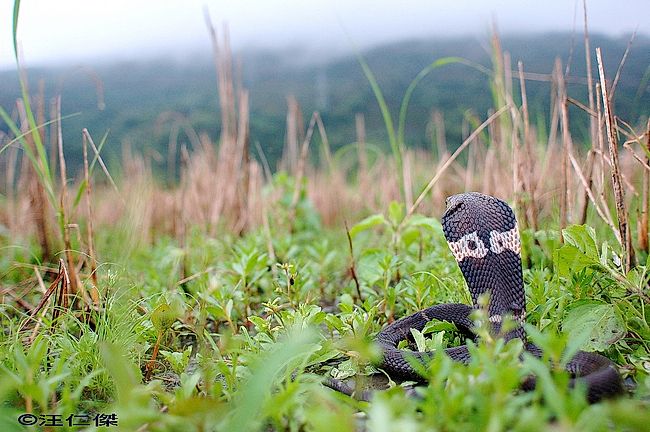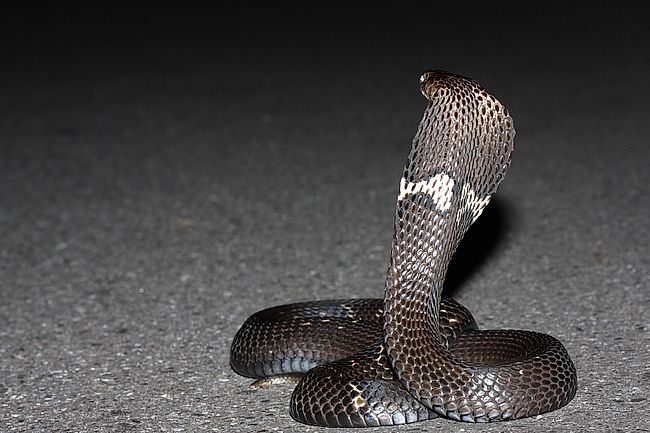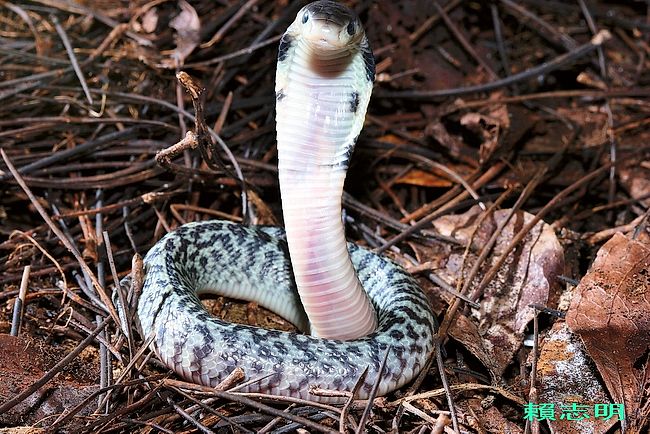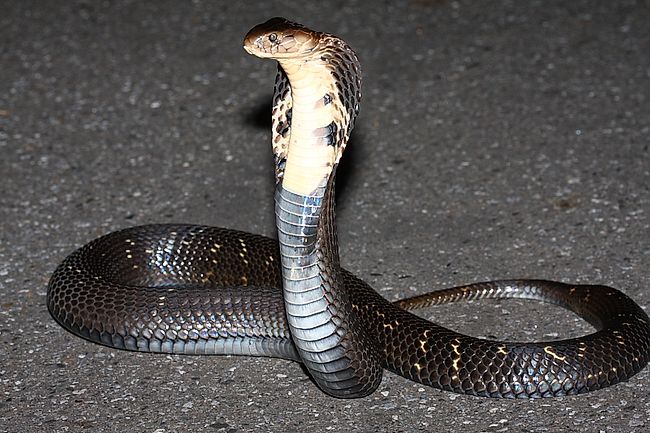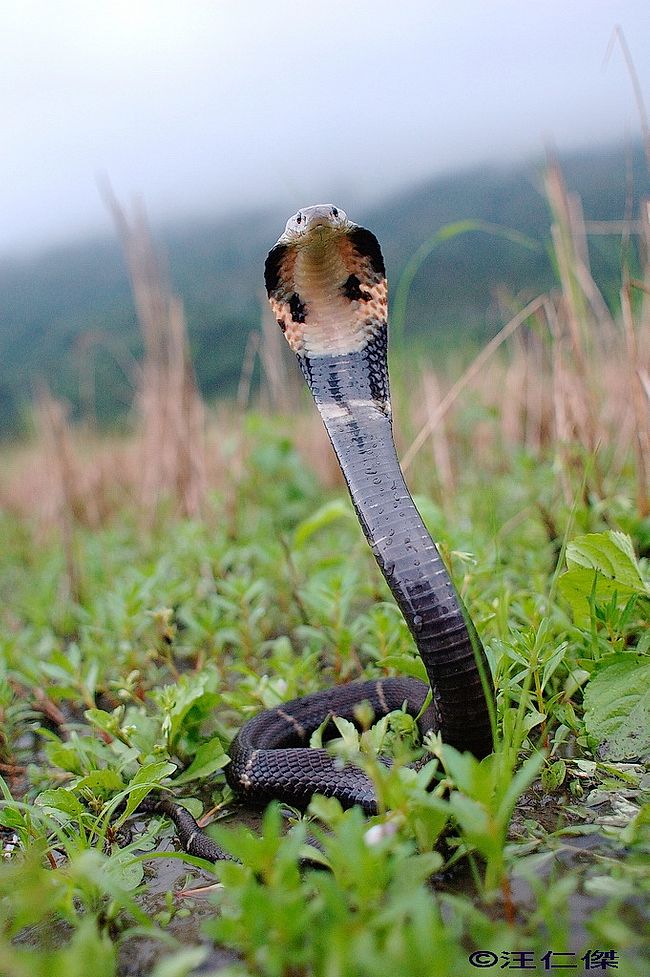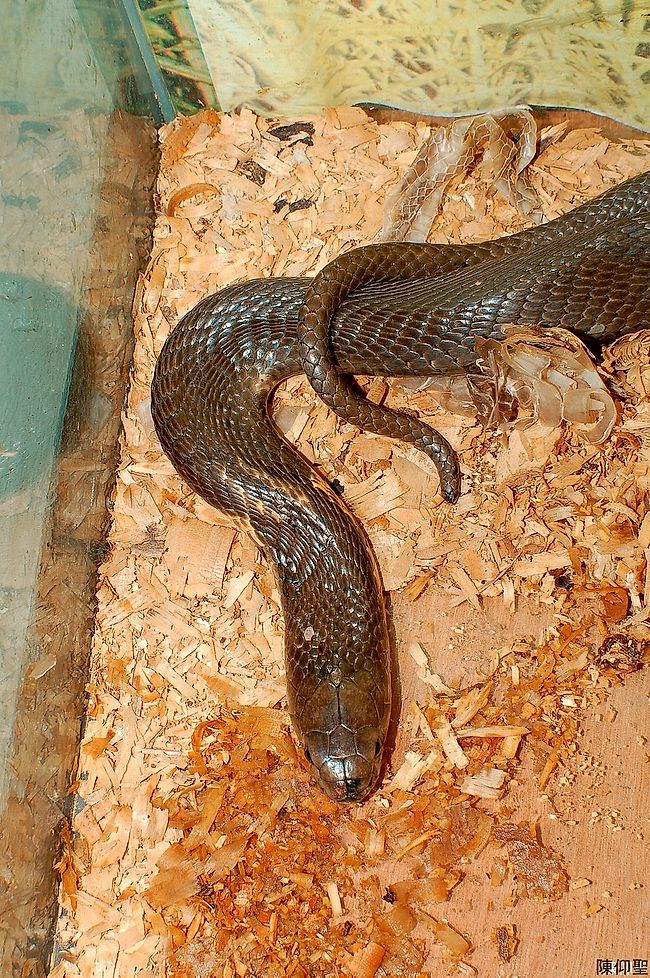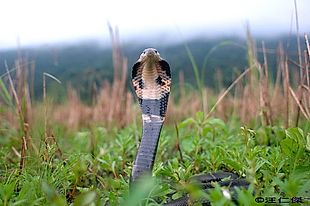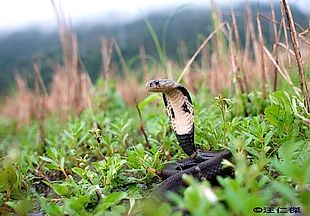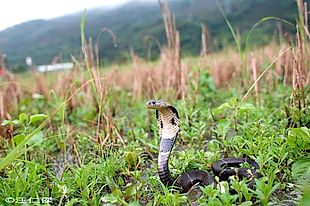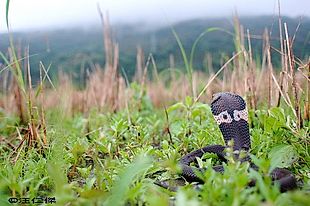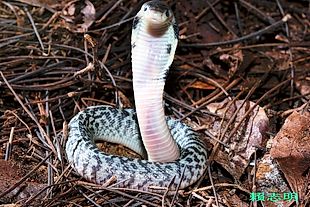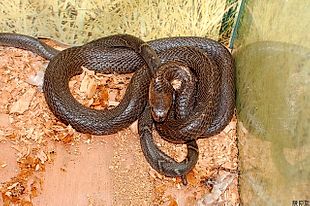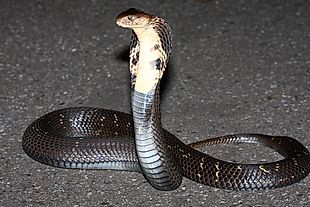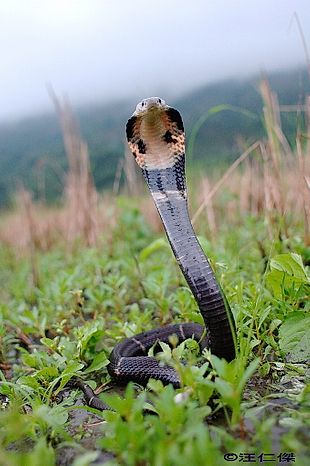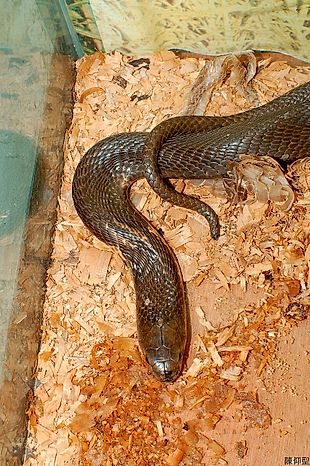Naja atra
Chinese Cobra
眼 鏡蛇 (yan3jing4she2)
Status: Protected (Cat.III)
HIGHLY VENOMOUS!
Videos
Family
Elapidae, subfamily Elapinae
Max. length
200 cm
Occurrence in Taiwan
Throughout Taiwan and Matsu, up to 1000 m altitude. Less common in Northern Taiwan.
Global Distribution
South China (Anhui, Sichuan, Fujian, Guangdong, Guangxi, Guizhou, Hainan, Hunan, Hubei, Zhejiang), Taiwan, N. Vietnam, N. Laos.
Description
Medium to large snake; total length up to 200 cm. There are 15-27 (19-21 at mid-body and 23-27 at neck) rows of smooth and glossy scales; the dorsolateral scales are strongly oblique. Head is broad, roughly triangular and slightly distinct from neck; body is moderately heavy, slightly flattened, and may be considerably flattened when angry; tail is short. Nostrils large and conspicuous. Eye is medium-sized; iris is dark dirty yellow dappled with dark gray black to blue-black and pupil is round, jet black. There are no loreals. Tongue is dark gray to blue-black, with stem possibly lighter in color than forks. Fangs are rigid, short to medium length, and located anterior to middle of upper law. Upper head is light gray tan to dark gray-black, usually the same color as upper body and tail; sides of head are lighter in color. Individuals bearing other colors in dorsal surface, such as white, yellow or brown may be found. There may be irregular or scattered crosslines of white to light gray along upper body and a spectacle-like mark on the upper face of the expanded neck (hood); however, the designs on the hood may range from partial figures to non-symmetrical patterns. Ventral head and neck are white to light gray or light orange; there may be one pair of small dark spots followed by a dark transverse band on the ventral face of hood. The color of ventral body and tail may be white to gray, dark gray mottled with white, or blackish. The populations in different geographic regions of Taiwan reveal a unique composition of ventral coloration: the eastern population is exclusively blackish (100%), the central and southern populations are mainly white to gray (both 80%), and the proportions of blackish and white-gray morphs in the northern population are 60% and 30%, respectively. Anal scale is entire, and subcaudals are paired.
Biology & Ecology
Cobras are arguably among the world's most easily identifiable animals. Most humans will immediately recognize a cobra in its agitated state: the front third of the body is raised straight into the air, swaying slightly, the famous "hood" spread out - there's no mistaking a cobra readying for a confrontation.
This snake is diurnal or crepuscular but prefers to hunt in the evening when the weather is hot. It inhabits plains, farmland, and mountains alike, and is sometimes found close to human dwellings. It feeds extensively on fish, frogs, toads, lizards, snakes, birds, bird eggs, and rodents - in fact, pretty much any animal it can force down its throat. The Chinese cobra mates in late spring and early summer; females lay 7-25 eggs of 4.2-5.4 x 2.6-3.1 cm per clutch in summer and habitually protect them. Hatchlings measure about 20 cm in total length.
At rest, the snake's head is not very distinct from the neck, but when threatened and on the defense, the snake will rapidly raise up its body, inflate the hood by expanding the long ribs in the neck, hiss loudly and strike out. The body may also be flattened to appear larger.
The Chinese cobra is highly venomous; yet the teeth marks are difficult to see on the wound. Its venom is both neurotoxic and cardiotoxic, with an LD50 of 0.53 mg/kg. N. atra can inject as much as 250 mg of venom in a single bite The cardiotoxins are cytotoxins; victims feel extreme pain, the wound swells, and necrosis sets in quickly. However, this species seldom causes death due to widely available antivenom. Some specimens may spit venom at aggressors, albeit with little accuracy.
Etymology
Naja : from Old Indian naga, meaning "snake";
atra: after the snake's color - the Latin term ater means "dark" or "black".
The Chinese name 眼鏡蛇 (yan3jing4she2) means "Spectacled Snake", referring to the markings on the back of the hood that resemble eyeglasses.
Further Info











